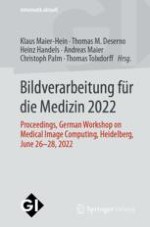2022 | Book
Bildverarbeitung für die Medizin 2022
Proceedings, German Workshop on Medical Image Computing, Heidelberg, June 26-28, 2022
Editors: Prof. Dr. Klaus Maier-Hein, Prof. Dr. Thomas M. Deserno, Prof. Dr. Heinz Handels, Prof. Dr. Andreas Maier, Prof. Dr. Christoph Palm, Prof. Dr. Thomas Tolxdorff
Publisher: Springer Fachmedien Wiesbaden
Book Series : Informatik aktuell
